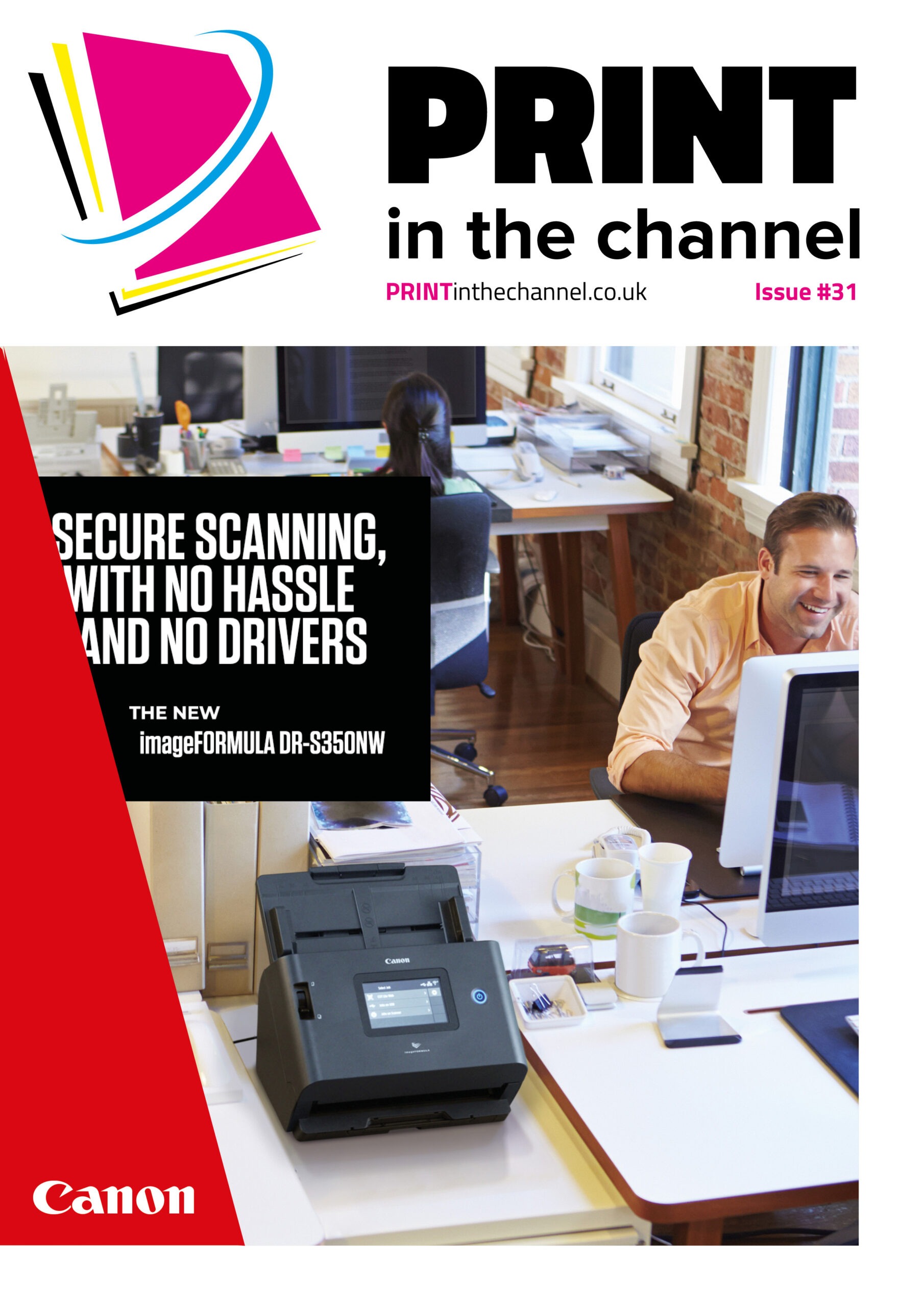Document management and workflow systems are becoming increasingly popular in many businesses as they look to increase efficiency and free up employees from mundane, repetitive tasks – and this is something resellers have a crucial role in delivering.
Document management systems are big business; the worldwide market is expected to grow from a current valuation of around $6 billion to $10.6 billion by 2025. In the UK too, the market is growing quickly.
The growth in use of document management and workflow systems is driven by a variety of factors such as the increasing adoption of cloud-based solutions, the rising demand for digital transformation, the need for regulatory compliance and the growing remote workforce, according to Andrew Cowling from PFU (EMEA) Ltd, a Ricoh company. “Businesses will need to embrace this transformation to remain successful,” he says.
Michael Field from Workflo Solutions adds that while document management has always been an important part of any organisation, the shift towards remote work, the provisions of the Data Protection Act and, more recently, GDPR (General Data Protection Regulation) have given this more focus for many businesses. “Physically or digitally storing documents is easy, the difficulty is creating a workflow that ensures continuity in storage allowing quick, easy access and full compliance with GDPR retention guidelines,” he says.
“Today, businesses are generating vast amounts of data and documents every day, and managing these documents efficiently is crucial to ensure that they are organised, secure and easily accessible to authorised personnel. Workflow services can help businesses to automate and streamline their processes, allowing for better management, compliance, collaboration and response times. By automating routine tasks and workflows, businesses can free up their employees’ time to focus on higher-value tasks, resulting in improved efficiency and effectiveness.”
Michael adds that while many businesses have already adopted document management services, there are still many that have yet to fully adopt this technology. “No business can escape full compliance with GDPR, and all must have a documented workflow detailing their document storage process along with a retention schedule,” he notes. “As we move to a more digital form of storage the policing of this can become much more difficult unless a workflow solution is implemented.
“As more businesses recognise the benefits of digitising their document workflows and adopting more efficient and secure solutions, the demand for these services is expected to continue to grow in the coming years.”
Part of digitalisation journey
Attar Naderi, associate director Europe & MENA at Laserfiche, adds that document management software is increasingly crucial as more businesses digitalise. “Streamlining business processes and increasing efficiency are fundamental concerns for any organisation, regardless of its size or industry,” he says. “By implementing document management software, business leaders can improve organisational efficiency and ultimately save time and resources.
“It doesn’t only benefit the business, but employees too. When the technology that facilitates employees’ roles works effectively, it allows them to focus on the tasks they thrive in and enjoy – not boring, repetitive tasks, but work that is purposeful and fulfilling.”
Much of this is now being done via the cloud, he adds. “When it comes to document management and workflow services, cloud is the future, because it is the easiest, most efficient way to access and organise your information — whether it is documents, audio/visual files, or other unstructured data. In fact, the software as a service industry is expected to expand to a value of over $400 billion by 2025.”
The increase in remote working is also fuelling growth in the use of document management software too, he adds. “Employees need to access work-related content no matter where they are, and that’s where cloud document management becomes a necessity as it’s all centralised, with access controls that enable organisations to give access to the relevant personnel.”
Security is also a consideration, Attar adds. “When it comes to cybersecurity, even the most robust IT teams face challenges creating in-house enterprise solutions for all cyberthreats. These threats are growing in number and complexity, which can strain IT teams that are also deploying solutions and answering helpdesk tickets. Cloud allows internal teams to offload security overhead to the vendor (or a firm dedicated to protecting cloud assets), enabling businesses to stay up to date with their security while distributing IT resources effectively.
“Finally, changing trends are informing how we do our everyday work. Largely gone are the days where every line of business was managed within the same application or family of applications. Today’s modern enterprise links different platforms together with content services platforms and others like it. This concept of bringing applications together to form a unique experience, called composition, is essential as modern applications are becoming more specialised and connected.
“Alongside supporting your workforce to optimally perform its tasks, it’s important to consider which tasks they even need to perform at all. Advancements in technologies like AI have brought a boom in business automation, with demand surging in more than 90% of companies worldwide, according to salesforce.com.
“Now, accurately automating day-to-day tasks, like sending welcome emails or signing off expense requests, not only removes the risk of human error but frees up employees for higher-value work. According to market research firm IDC, automating business processes can even save managers up to 40% of their time.”
Choosing solutions
But with the growth of demand for document management has come an expansion of the number of solutions available. Michael Field notes that one size does not fit all.
“Each customer will have their own unique data storage and gathering requirements,” he says. “Resellers should adapt a partnership approach with customers when discussing document management and workflow services. Workflo Solutions explores the current situation (document consultancy) and solutions together with its clients to provide them with the tools they need to improve efficiency, reduce costs and increase productivity. Resellers should emphasise the benefits of these services and work closely with customers to understand their unique needs and provide tailored solutions that deliver maximum value.
“By taking a partnership approach, resellers can build long-term relationships with customers and help them achieve their goals. Resellers should also provide ongoing support and training to help customers get the most out of their investment in document management and workflow services. By doing so, resellers can differentiate themselves from others.”
Paul Day from Filestream agrees that the best solution is the one that suits the business requirements for them. “It also comes down to costs as well,” he adds. “Some workflow solutions cost tens of thousands, while some are much less. Either could be classed as ‘the best’ if they meet the needs of a particular business and then deliver what was promised at the outset.”
Future
The growth in document management is set to continue in the coming years, Paul adds. “The future for document management and workflow is huge as AI is now becoming an everyday resource and it means this is more cost effective than it has ever been,” he says. “The innovations are endless as more and more businesses require applications to interact with each other and offer security and protection from cyberattacks, which is by far one of the biggest risks to business today.”
Andrew Cowling agrees that AI and machine learning are likely to play an increasing role in the future of document management. “These technologies enhance document management by providing intelligent capture, classification, extraction, analysis and processing of documents,” he says.
“Blockchain technology, based on crypto currency can provide a decentralised record for document management ensuring transparency, trust, authenticity and traceability of documents.”
Reseller tactics
With document management and workflow solutions set to become increasingly important, it is a market that resellers should be considering selling into. But, as Andrew notes, it should be done with caution.
“Resellers who want to offer document management services to their customers should consider a partnership-based approach, taking time to understand their customers’ needs, challenges, goals, and preferences,” he says. “Resellers should aim to highlight the value of document management in terms of improving efficiency, collaboration, security and compliance. You could also consider providing demonstrations, trials, training and support to your customers.
“By choosing the right solution and partner, businesses can reap the benefits of document management and workflow services.”
Simon Godfrey, content services sales consultant, Kyocera Document Solutions UK, says that the focus should be on adding value to customers and, more importantly, the business. “Typically, Kyocera’s approach is to advise businesses to start small and build-out licensing across their whole organisation. We’re seeing a definite increase in market awareness – interest is steadily growing in our content services, document management and workflow solutions offers from channel partners who have end-customers actively planning to automate more of their business processes.
“The simplest way for resellers to start a conversation around digitisation is to look at the paper trail in a business. Ask the questions: what do you do with that? Do you need to key that information into a system? How long do you need to keep it? What happens if you can’t find it? And if we look at AP – how many invoices do you process per month?”
He adds that resellers should look to help partners on their digitalisation journey, of which this is a crucial part.









